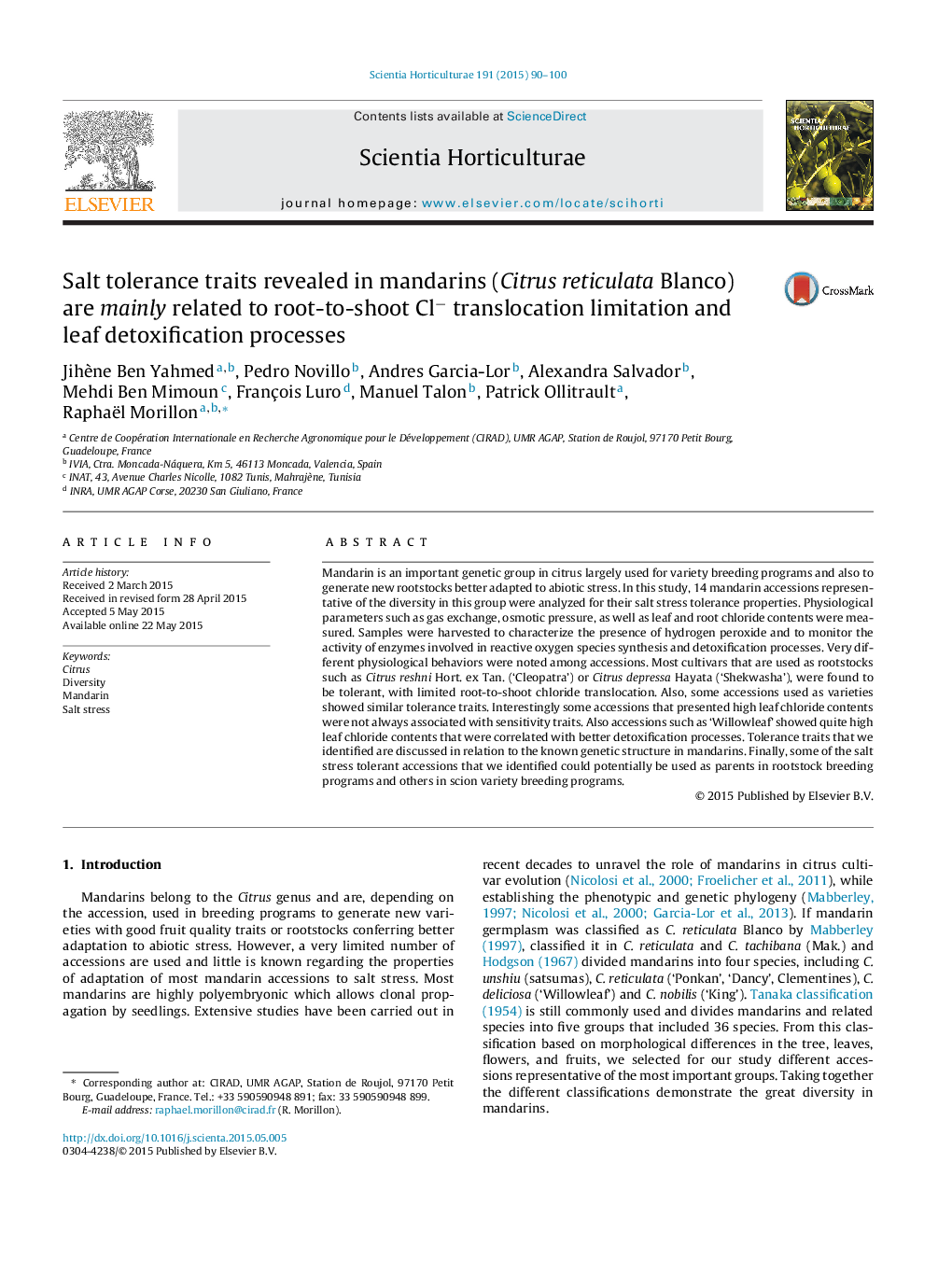| Article ID | Journal | Published Year | Pages | File Type |
|---|---|---|---|---|
| 4566301 | Scientia Horticulturae | 2015 | 11 Pages |
•Different behaviors of salt stress tolerance are noted among mandarins accessions representative of the diversity.•“Acidic” mandarins are tolerant to salt stress, with limited root-to-shoot chloride translocation.•Sensitive and tolerant accessions to salt stress are present among sweet mandarin varieties.•High leaf chloride contents are not always associated with sensitivity traits.•High leaf chloride contents are correlated with better detoxification processes.
Mandarin is an important genetic group in citrus largely used for variety breeding programs and also to generate new rootstocks better adapted to abiotic stress. In this study, 14 mandarin accessions representative of the diversity in this group were analyzed for their salt stress tolerance properties. Physiological parameters such as gas exchange, osmotic pressure, as well as leaf and root chloride contents were measured. Samples were harvested to characterize the presence of hydrogen peroxide and to monitor the activity of enzymes involved in reactive oxygen species synthesis and detoxification processes. Very different physiological behaviors were noted among accessions. Most cultivars that are used as rootstocks such as Citrus reshni Hort. ex Tan. (‘Cleopatra’) or Citrus depressa Hayata (‘Shekwasha’), were found to be tolerant, with limited root-to-shoot chloride translocation. Also, some accessions used as varieties showed similar tolerance traits. Interestingly some accessions that presented high leaf chloride contents were not always associated with sensitivity traits. Also accessions such as ‘Willowleaf’ showed quite high leaf chloride contents that were correlated with better detoxification processes. Tolerance traits that we identified are discussed in relation to the known genetic structure in mandarins. Finally, some of the salt stress tolerant accessions that we identified could potentially be used as parents in rootstock breeding programs and others in scion variety breeding programs.
